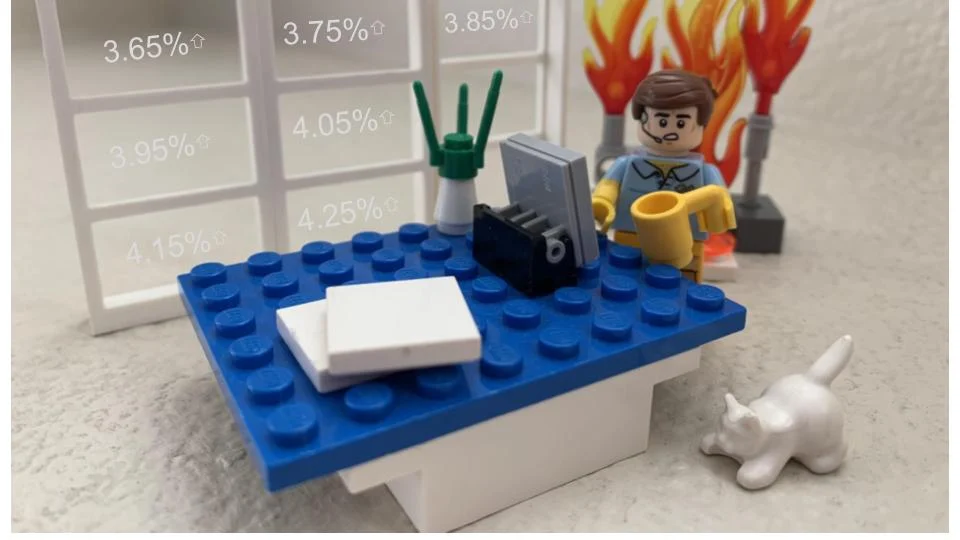4 Tips to Effectively Manage Non-remote Remote Teams
First and foremost, I hope everyone out there reading this is staying sane, practicing social distancing, and learning some useful techniques for emotional well-being while trapped in the house for significant periods of time.
While conversing with clients during the past 48 hours, one theme has been universal – particularly from a sales perspective:
How do I effectively manage an organization that wasn't meant to be remote, remotely?
I spent a few hours last night seeing what thought leadership was available on this subject and noticed a void in what to do for short term conditions like our current environment. Let’s face it, the intention is not to setup a permanent remote team, the goal is to navigate the coming weeks (perhaps months) successfully, and then bring your team back in house and return to normal. In this light I want to share four suggestions (and a few tips) on how to set yourself up for success and build an even stronger team.
1. First Line Management Should Be Your Focus
For your leadership team, as well as middle managers, focus on who needs the most help. It’s not your front-line employees! It’s actually your first-line managers. The skill sets that set apart a remote manager from an onsite manager are very different. It doesn’t mean they can’t be successful; it just means there needs to be extra attention given to make these employees successful in their jobs. Great employees always excel under great management. Focus on enabling your first-line managers and it will be the biggest force multiplier in regaining success.
***Tip: Many managers (particularly in sales) are not great at being open about failures and problems. Setting up a Manager call – consider twice a week – to talk about one success and one failure is a great way to mutually solve problems they are all facing, but may not realize or are not willing to discuss. Get problems out in the open and the group will solve them for you. You only need to provide the structure to have the conversation.
2. Metrics, Metrics, Metrics!
Metrics, KPIs, response times… whatever you call your key statistics that help your team determine success daily, become even more important when you are remote. Most sales pits have a TV screen or projector in the office showing current statuses, and how the day is progressing. From home this is harder to reproduce. Maybe your company has an online dashboard people can log in and follow? If so, make it mandatory to have and check multiple times through the day. If your organization utilizes something internally like Excel, put it into a shareable SharePoint document. Don’t have MS products? Go create a free Google account and load it into Sheets which can be shared with everyone. I’ve also used a third party tool (www.smartsheet.com) to create dashboards for teams in the past. It’s critical that everyone, including your sales teams, can see where they stand throughout the day. Knowing the entire company is watching these metrics adds to the motivational factor; you want all eyes on this board.
***Tip: If you don’t have an existing technology solution in place, consider taking someone from another functional role in the business (or hiring a contractor or temporary employee) to manually create/update a shared metric board for your sales team. Transparency is key in these situations. You need your sales teams and their line managers to know productivity is being viewed as close to real time as possible.
3. Start the Day Off Right
It took me longer than I care to admit to realize how critical this suggestion is for front-line employees. It needs to be mandated that all your first-line managers have a morning meeting to start the day, every day, with mandatory attendance. This simple act establishes a virtual ‘go’, and forces everyone to be up, have their coffee, and get ready to run. If video conferencing is available, it must be by video. Keep the format simple. Everyone goes around and gets about 15-30 seconds. Begin by having each sales rep \ LO state their goals for the day, where they stand against the weekly goal, and any issue(s) the manager needs to run point on. The format should be concise with the intention to start the day immediately thereafter.
*** Tip: Have an established (and keep it quick!) start time; inevitably people get online 5, 15, even 45 minutes late. If you have 100 front-line employees, who all log in 5 minutes late, you just lost over 41 hours of productivity in a single week! What if this happens every week during this event? Start the morning with this simple kickoff and productivity will be positively impacted.
4. End the Day Right
One of the best remote techniques I ever implemented was brought from a brilliant CEO who started ‘Daily Sales Shout Calls’. We were dealing across multiple time zones which made this more difficult. However, at 5:15 EST every day, every person in sales leadership dialed into a 15-minute call to review the day’s numbers. Each manager quickly reviewed their daily target, daily results, and where they stood against the weekly quota. Any consistent misses caused a separate meeting immediately after the call with the Sales Director and Sales VP for a remediation plan.
The intent of the call was to create transparency and accountability which is key to remote success. Our CEO attended more than half the time, and senior sales leadership was always in attendance. The call was high energy, people were always cheering when goals were exceeded. There was a roll up to show where sales as a whole stood, creating company identity.
***Tip: The format needs to be tight and no more than 15 minutes. And when everyone knows they will be accountable daily, you will drive different behaviors.
There are a few extra tips and tricks I’d like to offer (and lessons learned from my mistakes!) from my experience.
Extra Tip 1: KISS
I love the KISS methodology (Keep it Simple Stupid!), and I apply it to all aspects of my life. I read a good 7-10 articles last night around various remote strategies, many well written and techniques and strategies I have implemented. However, all were designed around permanent work forces, not temporary needs. In these crazy times simplicity is the key to execution, do not over complicate your strategy. It will be natural, especially for your managers are more adept at making remote work viable, to want to complicate and add additional steps. Obviously listen and be open, different techniques work for different organizations. However, when trying to navigate a temporary situation keep the process simple and easy to follow. If you decide to make an investment in remote teams long term, then this does not apply. For the short term find a process and don’t deviate.
Extra Tip 2: Eliminate the Unnecessary
We all have personal and professional goals, beyond the day to day, that we look to accomplish over the course of a quarter. These are unprecedented times that really require all organizations to focus on what is at the core of your success. For each additional task, when working remotely, it’s an invite to get distracted and off-track. Especially when everyone is learning a new normal, and it’s highly likely that otherwise absent spouses, kids, and other distractions are now present. Please keep the focus (in the short term) on what is vital. The rest should be re-assessed as time progresses.
Extra Tip 3: Follow the Process Daily
Within a few weeks, a certain teams will adapt and start asking for process changes. Do we really need that morning kickoff meeting? Can we do a phone call instead of video. NO, NO, NO! As much as I love making teams independent and giving them control, the second this happens your results will suffer. Other teams will want to follow suit and it will snowball. Find your daily process and do not deviate. I have made a career building ‘System for Success’, however the second you deviate from those systems you will see your success deviate too.
I really hope my insight helps with some basic strategies toward getting your remote teams successful and creating a successful model for the short term. If you have any questions or would like to talk about other issues, I’d be happy to spend 30 minutes to discuss. Just reach out and we can grab some time: Martin@monsterlg.com.
Martin Harris is Monster Lead Group’s Chief Commercial Officer, and during the past 15 years has run global remote teams that consistently exceeded sales goals. By both managing directly, and partnering with inbound/outbound and field sales teams, he has established many effective best practices (and tried 100s that did not work) to drive top performance. In this time of unprecedented work conditions, we asked him to lend some thoughts on how companies should best navigate.





